CSC/ECE 506 Fall 2007/wiki1 4 JHSL: Difference between revisions
(→Memory) |
|||
| (40 intermediate revisions by 2 users not shown) | |||
| Line 1: | Line 1: | ||
= Architectual Trends = | = Architectual Trends = | ||
== General trends == | == General trends == | ||
During the last ten years general | During the last ten years, general architectural trends did not change much: logic density is still increasing, number of CPUs per machine is rising, and memory size and bandwidth are growing. The only difference is that most of the yesterday's bleeding-edge technologies have made their way to the consumer market. They are now available for individual users, not just big companies and research centers. Ready availability of such technologies, in turn, has fed the hi-end portion of the market, and today the commodity parts are the preferred choices for the state-of-the art computer building. | ||
While general direction is still the same, it is important to note some of the technological advances that could potentially set the direction for the next generation of computers. In this article, the bottom-up approach will be used to discuss architectural trends--major advancements in the underlying technology will be mentioned first, and discussion of the higher-level architecture will follow. | |||
== "Rock bottom" (Silicone/Carbon) == | == "Rock bottom" (Silicone/Carbon) == | ||
[[Image:45nm_SRAM_Cell_sm.jpg|thumb|A 45nm 6-transistor SRAM cell, developed by Intel [2] ]] | |||
=== Trend of a transistor size === | === Trend of a transistor size === | ||
The very basic building block of electronic technology, the transistor, has | The very basic building block of electronic technology, the transistor, has shrunk dramatically during the past decade. Processors built on 45nm technology are widely available on the market. According to Intel's press release from the beginning of this year, "Just a decade ago, the state-of-the-art process technology was 250nm, meaning transistor dimensions were approximately 5.5 times the size and 30 times the area of the technology announced today by Intel" [1]. | ||
It is worth mentioning that while 45nm is current production specification, all major players have already announced plans to decrease trace width even further. | |||
<br clear="all"> | |||
[[Image:45nm_wafer_photo_2_sm.JPG|thumb|Intel engineer holds 300 mm wafer]] | |||
=== Wafer size and CPU footprint === | === Wafer size and CPU footprint === | ||
While the transistor size continues to decrease, | While the transistor size continues to decrease, manufacturers have been consistently moving towards larger silicon wafer sizes. Today, most of the CPUs are produced on 300mm wafers. Combined with increased logic density, this allows manufacturers to produce more processors from a single wafer, therefore significantly decreasing overall production costs. | ||
<br clear="all"> | |||
[[Image:250px-Types_of_Carbon_Nanotubes.png|thumb|Carbon nanotubes, from http://en.wikipedia.org/wiki/Carbon_nanotube]] | |||
=== The Future is here: Carbon nanotubes === | === The Future is here: Carbon nanotubes === | ||
While | While silicon is still the primary choice for today's technology, a new material has attracted attention of the semiconductor industry--carbon nanotubes. Carbon nanotubes are microscopic cylinders of only about 1nm in diameter, and possess very interesting electrical properties. Under some conditions they can be metallic, and under other conditions they act as semiconductors. In 2001, IBM was successful in constructing first carbon-based transistors [3]. | ||
<br clear="all"> | |||
<br> | |||
== Longer, Wider, Deeper and Smarter: == | == Longer, Wider, Deeper and Smarter: == | ||
[[Image:PentiumII.GIF|thumb|Intel Pentium II chip, from [http://www.answers.com/topic/pentium-ii?cat=technology answers.com]]] | |||
Ever decreasing transistor | Ever decreasing transistor size has enabled design of ever more complex processors. In 1995, Intel released its biggest CPU to date, the Pentium PRO. Based on the revolutionary P6 design, it introduced such features as speculative execution, super pipelining, and register renaming to the x86 world for the first time. The Pentium PRO's better known incarnation, the Pentium II, was introduced to the mass market in 1997, and represented one of the best and longest-running CPU architectures developed by Intel. As shown in the diagram, the Pentium-II had five distinct execution units, controlled by out-of-order execution logic. This allowed Pentium-II CPUs to execute up to 5 uOPS per each clock cycle. Combined with deep high-clock and a 12-stage pipeline, the CPU provided superior performance. | ||
<br> | <br clear="all"> | ||
[[Image:Pentium4.jpg|thumb|Pentium 4, from [http://www.phys.uu.nl/~steen/web02/p4.jpg www.phys.uu.nl]]] | |||
=== Longer pipelines (Intel Netburst) === | === Longer pipelines (Intel Netburst) === | ||
Encouraged by success of long | Encouraged by success of long pipelines in P6 architecture, Intel decided to push it even further. In November 2000, new "Netburst" technology was introduced to the market in the Pentium 4. This CPU had been completely redesigned, and featured an extremely long, 31-stage pipeline that could run at clock speeds of up to 4GHz. | ||
<BR | <BR clear="all"> | ||
[[Image:K8-core.gif|thumb|The K8 core, from [http://www.cpuid.com/reviews/K8/K8-core.gif cpuid.com]]] | |||
=== Wider internal buses, more logical units === | === Wider internal buses, more logical units === | ||
While Intel was engaged into the chase after The Gigahertz, AMD took another approach to increasing CPU performance. | While Intel was engaged into the chase after The Gigahertz, AMD took another approach to increasing CPU performance. The newly-designed AMD K8 had a much shorter pipeline (11 steps for integers units and 17 steps for floating point), compared to 31 of Intel Pentium 4. This meant that each stage had to do more work, so the processor was not capable of clock speeds as high as its rival. However, what K8 lacked in clock cycles per second, it picked up in number of instructions executed per clock cycle. A simple look at K8's architectural diagram reveals that AMD, in some sense, succeeded to glue together three nearly complete cores in a single CPU. There are three of everything: decoders, schedules, ALU/AGU, and FPU units (although not all of them are equal in functionality). | ||
<br clear="all"> | |||
There are three of everything: decoders, schedules, ALU/AGU, and FPU units (although not all of them are equal in functionality). | |||
=== Deeper caches === | === Deeper caches === | ||
As core clock speeds skyrocketed, so did the need for fast memory access. However, since front-side buses were not in position to deliver the bandwidth, | As core clock speeds skyrocketed, so did the need for fast memory access. However, since front-side buses were not in position to deliver the bandwidth and, more importantly, short response times required by modern CPUs, the industry turned to caching. In a relatively short period of time, cache sizes grew from 128KB to 512KB and then even to several megabytes. For some CPUs, FSB bandwidth problem became so critical that not only was the L2 cache size increased, but a whole extra L3 cache layer was added. Today it is not unusual to see a system with 8MB of L2 cache (Intel Core 2 Quad) or even 24MB of L3 cache (Intel Itanium 2 9050). | ||
==="Smarter" CPUs === | ==="Smarter" CPUs === | ||
[[Image:800px-Itanium_arch.png|thumb|Intel Itanium, from [http://upload.wikimedia.org/wikipedia/commons/thumb/7/7c/Itanium_arch.png/800px-Itanium_arch.png wikipedia]]] | |||
CPUs not only became smaller, faster and capable of performing multiple instructions per cycle; they also became smarter about how they performed instructions. As a rule, practically all modern CPUs implement in hardware such elaborate mechanisms as branch prediction, speculative execution, register renaming and out-of-order execution. But as we all know, there are no rules without exceptions, and one of the most interesting exceptions is the Intel Itanium. Instead of a complex logic implementation, it has the ability to read "hints" generated by a compiler from the code stream and make decisions based on that information. This approach allowed it to replace "fixed" rules embedded in silicon with the flexibility of a compiler that could perform far more complex analysis. | |||
Another interesting development was the introduction of a built-in memory controller in Opteron processors by AMD. This feature allowed the CPU to manage all memory access the way it saw fit, ensuring that other components could not delay memory requests coming from the CPU. | |||
<br clear="all"> | |||
Another interesting development | |||
== "My dual quad-core with quad-SLI" == | == "My dual quad-core with quad-SLI" == | ||
Manufacturers began receiving diminishing returns on performance when adding additional execution units into the CPU. Thus, they were forced to shift their attention from instruction-level to thread-level parallelism. The following sections takes a closer look at some of the recent thread-level developments. | |||
[[Image:Hyperthreading.gif|thumb|[http://www.digit-life.com/articles/pentium4xeonhyperthreading/index.html Pentium 4 Xeon HyperThreading]]] | |||
=== Intel Hyperthreading === | === Intel Hyperthreading === | ||
The first commodity processor that | The first commodity processor that could handle multiple threads at the same time was the Intel Pentium 4 with HyperThreading (HT) technology. The basic idea behind the HT was to keep the same number of execution units in the CPU, but double the register file and some control logic to allow two threads to share the resources of a single CPU. | ||
<br> | <br clear="all"> | ||
[[Image:41037A_01_A64_X2_diag.jpg|thumb|AMD X2 architecture, from [http://www.amd.com/us-en/Processors/ProductInformation/0,,30_118_9485_13041%5E13043,00.html amd.com]]] | |||
=== Intel Core 2 Duo, AMD X2 === | === Intel Core 2 Duo, AMD X2 === | ||
The next logical step after HyperThreading was full-scale multi-core design. While Intel rushed to put two separate cores connected via FSB in the same package, AMD held off it | The next logical step after HyperThreading was full-scale multi-core design. While Intel rushed to put two separate cores connected via FSB in the same package, AMD held off on release until it could perfect its own dual core CPU. As a result, AMD came to the market later, but with a better, "real," Dual-core CPU, not just two separate cores in the same packaging. | ||
Shortly thereafter, Intel released its revised dual-core processor, this time designed similarly to AMD's. | |||
Both manufacturers have strong plans to increase the number of cores per package, and Intel has already released it's first Quad-Core CPUs. | |||
<br clear="all"> | |||
Shortly thereafter, Intel released | |||
=== Cell === | === Cell === | ||
In 2001, Sony, Toshiba, and IBM (collectively known as "STI") began working on the Cell Broadband Engine Architecture ("cell") processor. It | [[Image:Cell_Processor.gif|thumb|The cell processor, from http://www-128.ibm.com/developerworks/power/library/pa-fpfeib/]] | ||
<br> | In 2001, Sony, Toshiba, and IBM (collectively known as "STI") began working on the Cell Broadband Engine Architecture ("cell") processor. It contained general-purpose RISC-based processor cores and a set of highly-specialized coprocessors which could handle multimedia and vector processing tasks with high efficiency. The engineers of the cell processor chose to favor power efficiency, high bandwidth, and computational speed over ease of development, which led some to claim that the platform was difficult to use in development. The cell processor was widely distributed as part of the Sony PlayStation 3 gaming console, in a configuration with a single general-purpose processor with seven coprocessors. | ||
<br clear="all"> | |||
=== Sun Niagara === | === Sun Niagara === | ||
If you think that having two dual-core CPUs with HyperThreading in the same box is insane or having seven co-processors is a bit excessive, think again. | [[Image:G20_news_qer07_sm.jpg|thumb|Jonathan Schwartz, President and CEO of Sun, holds a Niagara 2 wafer. From http://www.sun.com/processors/UltraSPARC-T2/ ]] | ||
If you think that having two dual-core CPUs with HyperThreading in the same box is insane or having seven co-processors is a bit excessive, think again. By introducing its Niagara technology, Sun Microsystems made the whole notion of number of CPUs in a box irrelevant. This monster has up to eight UltraSparc cores in a single package and is capable of running 4 threads per core. As if this was not enough, it was possible to have multiple CPUs in the same system. Sun positioned the chip as environmentally friendly, since it consumed only 70 watts of power, far less than comparable chips in the market. The Niagara processor was released in 2005 as the Sun "UltraSPARC T1". | |||
Attempting to build on the success of the UltraSPARC T1, Sun began designing the second generation chip, the "UltraSPARC T2", codenamed "Niagara 2" which doubled the number of concurrently executed threads from 32 to 64. | Attempting to build on the success of the UltraSPARC T1, Sun began designing the second generation chip, the "UltraSPARC T2", codenamed "Niagara 2", which doubled the number of concurrently executed threads from 32 to 64. The power consumption was increased to 95 watts, but significant features were added, including 10GB Ethernet, PCI Express (PCIe), and integrated cryptographic and floating point units for each of the cores. | ||
<br clear="all"> | |||
| Line 98: | Line 85: | ||
== Buses and memory == | == Buses and memory == | ||
[[Image:400px-AGP_PCI_PCIE_PCIEx1_Bus.jpg|thumb|A motherboard with PCI, AGP, and PCIe sockets, from http://reference.techpowerup.com/PCI_Express ]] | |||
=== Parallel Buses === | === Parallel Buses === | ||
The PCI (Peripheral Component Interconnect) architecture was introduced by Intel in 1992, but did not gain significant traction over the established VESA Local Bus (VLB) in the consumer market until 1994. It was originally released only as a component specification, but later revisions added requirements for shape of connectors and motherboard slots. The bus | The PCI (Peripheral Component Interconnect) architecture was introduced by Intel in 1992, but did not gain significant traction over the established VESA Local Bus (VLB) in the consumer market until 1994. It was originally released only as a component specification, but later revisions added requirements for shape of connectors and motherboard slots. The bus supported both 32-bit and 64-bit bus widths. The original specification provided a 33 MHz bus speed for a peak transfer rate of 133 MB/second for a 32-bit bus, and 266 MB/second for a 64-bit bus. Later revisions of the standard increased the frequency to 66 MHz, with a peak transfer rate of 533 MB/second for a 64-bit bus. | ||
As time progressed, heavily-graphical applications (such as video games) began pushing the limits of the shared PCI bus. In response to this, the Accelerated Graphics Port (AGP) standard appeared in 1997, which provided a direct connection between the processor and a single graphics device. AGP | As time progressed, heavily-graphical applications (such as video games) began pushing the limits of the shared PCI bus. In response to this, the Accelerated Graphics Port (AGP) standard appeared in 1997, which provided a direct connection between the processor and a single graphics device. AGP, though commonly referred to as a bus, was in fact a simple point-to-point channel. The single-purpose nature of this pathway allowed higher performance than could be attained when a graphics adapter shared the PCI bus. AGP was released in 1x, 2x, 4x, and 8x variants, which allowed data rates ranging from 266 MB/second up to 2133 MB/second. Higher data rates in later revisions were achieved with a constant clock speed of 66 MHz using double-data rate (DDR) and quad-data rate (QDR) techniques, among others. | ||
In 1998, Compaq, IBM, and HP submitted a specification for PCI Extended (PCI-X) to the PCI Special Interest Group of the ACM, where it was ratified as an open standard. PCI-X doubled the bus speed over "traditional" PCI to 133 MHz, allowing for throughput up to 1.06 GB/second. This was needed because some devices, such as Gigabit ethernet cards, were saturating the PCI bus. Later revisions to PCI-X were ratified in 2003, and added even higher clock speeds (up to 533 MHz) and correspondingly higher throughputs. PCI-X never gained much market share, however, as hardware manufacturers largely chose to adopt PCI Express (PCI-E) instead. | In 1998, Compaq, IBM, and HP submitted a specification for PCI Extended (PCI-X) to the PCI Special Interest Group of the ACM, where it was ratified as an open standard. PCI-X doubled the bus speed over "traditional" PCI to 133 MHz, allowing for throughput up to 1.06 GB/second. This was needed because some devices, such as Gigabit ethernet cards, were saturating the PCI bus. Later revisions to PCI-X were ratified in 2003, and added even higher clock speeds (up to 533 MHz) and correspondingly higher throughputs. PCI-X never gained much market share, however, as hardware manufacturers largely chose to adopt PCI Express (PCI-E) instead. | ||
| Line 107: | Line 97: | ||
===Serial Buses === | ===Serial Buses === | ||
In 2001, the open HyperTransport specification was released by the HyperTransport Consortium. It provided bidirectional packet-based communications between components. It could be considered a "hybrid" technology, as it | In 2001, the open HyperTransport specification was released by the HyperTransport Consortium. It provided bidirectional packet-based communications between components. It could be considered a "hybrid" technology, as it supported data widths from 2 bits (one in each direction) to 32 bits (16 in each direction). Communication frequencies were auto-negotiated between the devices up to 2.6 GHz, providing a maximum bandwidth of 20.8 GB/second in each direction. An extension called HyperTransport eXpansion (HTX) was developed which allowed plug-in cards direct access to a CPU and system memory; this gave them the ability to act as "first class citizens" on the motherboard. Using this mechanism, companies developed their own devices (mostly FPGAs) which could be plugged directly into the CPU socket. HyperTransport technology was deployed in a broad range of devices, from the Microsoft XBox gaming console to Cisco routers. | ||
To replace the existing PCI, PCI-X, and AGP buses, Intel released the serial PCI Express (PCIe) in 2004. PCIe was designed to be software-compatible with existing PCI devices. Although the serial link | To replace the existing PCI, PCI-X, and AGP buses, Intel released the serial PCI Express (PCIe) in 2004. PCIe was designed to be software-compatible with existing PCI devices. Although the serial link transmitted only one bit at a time, the specification allowed up to 32 of these serial links (called "lanes") to be used concurrently. The lanes were not clock-synchronized; rather, the data were encoded using the 8b/10b scheme, which allowed the receiver to automatically discover the clock from the data. They operated at 2.5 GHz, allowing for a maximum effective throughput at 32 lanes of 8 GB/second in each direction. Physically, PCIe devices were connected using a crossbar switch, which allowed dynamic reallocation of communication lanes between any pair of devices. This was an improvement over the bus architectures, in which only one device could communicate at a time. Multiple lanes could be allocated between a pair of devices to achieve higher bandwidth communications. When multiple lanes were allocated to a given pair of devices, the data were interleaved across the lanes. This was referred to in the specification as "data striping". Version 2.0 of PCIe was released in January of 2007, which retained backward compatibility but allowed for a doubling of the data rate in each of the lanes to 500 MB/second. | ||
<!-- | <!-- | ||
| Line 118: | Line 108: | ||
== Conclusion == | == Conclusion == | ||
As mentioned | As mentioned earlier, the main architectural trends have largely remained the same over the past decade: increasing logic density, higher instruction-level parallelism, and multiprocessing. The only thing that changed was the scale at which ILP and TLP was distributed. Ready access to high-density logic, high-speed buses, and CPU interconnects has provided an opportunity to mass-market systems with real parallel architecture for the first time. About 10 years ago, NUMA (Non-Uniform Memory Access) systems were only talked about in context of supercomputers. Today, anyone can afford a Dual-Socket AMD system that is a real NUMA machine. | ||
= References / Extra info = | = References / Extra info = | ||
Latest revision as of 21:02, 7 September 2007
Architectual Trends
General trends
During the last ten years, general architectural trends did not change much: logic density is still increasing, number of CPUs per machine is rising, and memory size and bandwidth are growing. The only difference is that most of the yesterday's bleeding-edge technologies have made their way to the consumer market. They are now available for individual users, not just big companies and research centers. Ready availability of such technologies, in turn, has fed the hi-end portion of the market, and today the commodity parts are the preferred choices for the state-of-the art computer building.
While general direction is still the same, it is important to note some of the technological advances that could potentially set the direction for the next generation of computers. In this article, the bottom-up approach will be used to discuss architectural trends--major advancements in the underlying technology will be mentioned first, and discussion of the higher-level architecture will follow.
"Rock bottom" (Silicone/Carbon)

Trend of a transistor size
The very basic building block of electronic technology, the transistor, has shrunk dramatically during the past decade. Processors built on 45nm technology are widely available on the market. According to Intel's press release from the beginning of this year, "Just a decade ago, the state-of-the-art process technology was 250nm, meaning transistor dimensions were approximately 5.5 times the size and 30 times the area of the technology announced today by Intel" [1].
It is worth mentioning that while 45nm is current production specification, all major players have already announced plans to decrease trace width even further.

Wafer size and CPU footprint
While the transistor size continues to decrease, manufacturers have been consistently moving towards larger silicon wafer sizes. Today, most of the CPUs are produced on 300mm wafers. Combined with increased logic density, this allows manufacturers to produce more processors from a single wafer, therefore significantly decreasing overall production costs.

The Future is here: Carbon nanotubes
While silicon is still the primary choice for today's technology, a new material has attracted attention of the semiconductor industry--carbon nanotubes. Carbon nanotubes are microscopic cylinders of only about 1nm in diameter, and possess very interesting electrical properties. Under some conditions they can be metallic, and under other conditions they act as semiconductors. In 2001, IBM was successful in constructing first carbon-based transistors [3].
Longer, Wider, Deeper and Smarter:
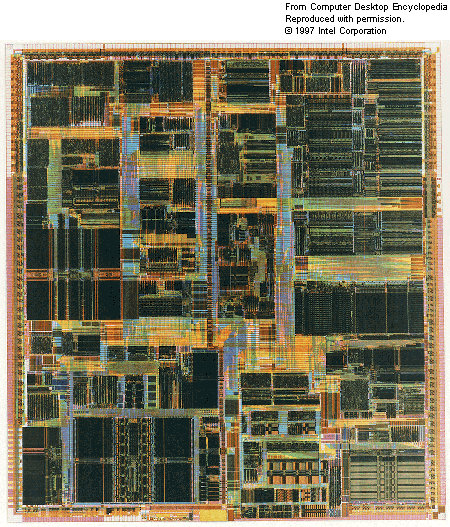
Ever decreasing transistor size has enabled design of ever more complex processors. In 1995, Intel released its biggest CPU to date, the Pentium PRO. Based on the revolutionary P6 design, it introduced such features as speculative execution, super pipelining, and register renaming to the x86 world for the first time. The Pentium PRO's better known incarnation, the Pentium II, was introduced to the mass market in 1997, and represented one of the best and longest-running CPU architectures developed by Intel. As shown in the diagram, the Pentium-II had five distinct execution units, controlled by out-of-order execution logic. This allowed Pentium-II CPUs to execute up to 5 uOPS per each clock cycle. Combined with deep high-clock and a 12-stage pipeline, the CPU provided superior performance.
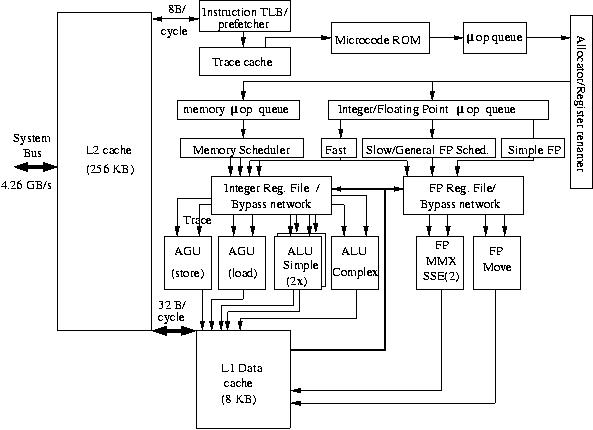
Longer pipelines (Intel Netburst)
Encouraged by success of long pipelines in P6 architecture, Intel decided to push it even further. In November 2000, new "Netburst" technology was introduced to the market in the Pentium 4. This CPU had been completely redesigned, and featured an extremely long, 31-stage pipeline that could run at clock speeds of up to 4GHz.
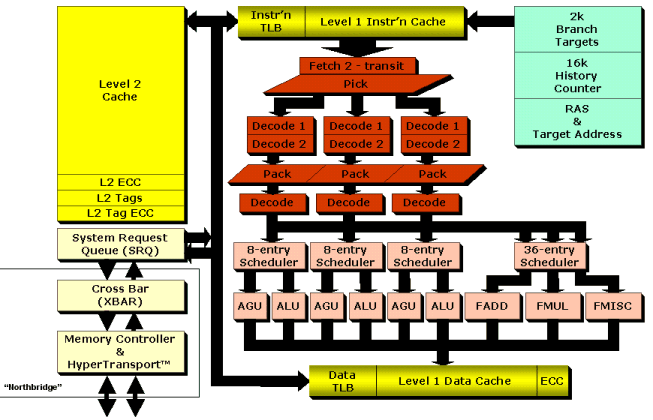
Wider internal buses, more logical units
While Intel was engaged into the chase after The Gigahertz, AMD took another approach to increasing CPU performance. The newly-designed AMD K8 had a much shorter pipeline (11 steps for integers units and 17 steps for floating point), compared to 31 of Intel Pentium 4. This meant that each stage had to do more work, so the processor was not capable of clock speeds as high as its rival. However, what K8 lacked in clock cycles per second, it picked up in number of instructions executed per clock cycle. A simple look at K8's architectural diagram reveals that AMD, in some sense, succeeded to glue together three nearly complete cores in a single CPU. There are three of everything: decoders, schedules, ALU/AGU, and FPU units (although not all of them are equal in functionality).
Deeper caches
As core clock speeds skyrocketed, so did the need for fast memory access. However, since front-side buses were not in position to deliver the bandwidth and, more importantly, short response times required by modern CPUs, the industry turned to caching. In a relatively short period of time, cache sizes grew from 128KB to 512KB and then even to several megabytes. For some CPUs, FSB bandwidth problem became so critical that not only was the L2 cache size increased, but a whole extra L3 cache layer was added. Today it is not unusual to see a system with 8MB of L2 cache (Intel Core 2 Quad) or even 24MB of L3 cache (Intel Itanium 2 9050).
"Smarter" CPUs

CPUs not only became smaller, faster and capable of performing multiple instructions per cycle; they also became smarter about how they performed instructions. As a rule, practically all modern CPUs implement in hardware such elaborate mechanisms as branch prediction, speculative execution, register renaming and out-of-order execution. But as we all know, there are no rules without exceptions, and one of the most interesting exceptions is the Intel Itanium. Instead of a complex logic implementation, it has the ability to read "hints" generated by a compiler from the code stream and make decisions based on that information. This approach allowed it to replace "fixed" rules embedded in silicon with the flexibility of a compiler that could perform far more complex analysis.
Another interesting development was the introduction of a built-in memory controller in Opteron processors by AMD. This feature allowed the CPU to manage all memory access the way it saw fit, ensuring that other components could not delay memory requests coming from the CPU.
"My dual quad-core with quad-SLI"
Manufacturers began receiving diminishing returns on performance when adding additional execution units into the CPU. Thus, they were forced to shift their attention from instruction-level to thread-level parallelism. The following sections takes a closer look at some of the recent thread-level developments.
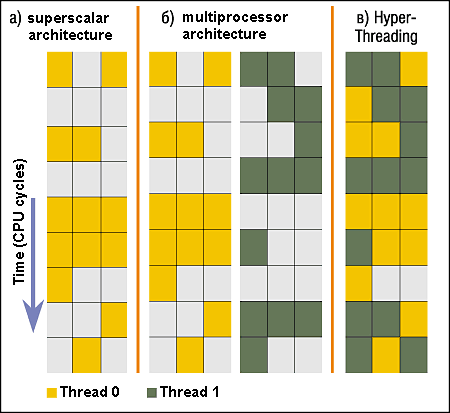
Intel Hyperthreading
The first commodity processor that could handle multiple threads at the same time was the Intel Pentium 4 with HyperThreading (HT) technology. The basic idea behind the HT was to keep the same number of execution units in the CPU, but double the register file and some control logic to allow two threads to share the resources of a single CPU.

Intel Core 2 Duo, AMD X2
The next logical step after HyperThreading was full-scale multi-core design. While Intel rushed to put two separate cores connected via FSB in the same package, AMD held off on release until it could perfect its own dual core CPU. As a result, AMD came to the market later, but with a better, "real," Dual-core CPU, not just two separate cores in the same packaging.
Shortly thereafter, Intel released its revised dual-core processor, this time designed similarly to AMD's.
Both manufacturers have strong plans to increase the number of cores per package, and Intel has already released it's first Quad-Core CPUs.
Cell
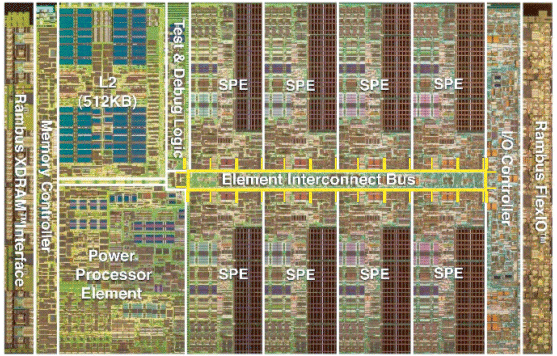
In 2001, Sony, Toshiba, and IBM (collectively known as "STI") began working on the Cell Broadband Engine Architecture ("cell") processor. It contained general-purpose RISC-based processor cores and a set of highly-specialized coprocessors which could handle multimedia and vector processing tasks with high efficiency. The engineers of the cell processor chose to favor power efficiency, high bandwidth, and computational speed over ease of development, which led some to claim that the platform was difficult to use in development. The cell processor was widely distributed as part of the Sony PlayStation 3 gaming console, in a configuration with a single general-purpose processor with seven coprocessors.
Sun Niagara
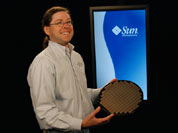
If you think that having two dual-core CPUs with HyperThreading in the same box is insane or having seven co-processors is a bit excessive, think again. By introducing its Niagara technology, Sun Microsystems made the whole notion of number of CPUs in a box irrelevant. This monster has up to eight UltraSparc cores in a single package and is capable of running 4 threads per core. As if this was not enough, it was possible to have multiple CPUs in the same system. Sun positioned the chip as environmentally friendly, since it consumed only 70 watts of power, far less than comparable chips in the market. The Niagara processor was released in 2005 as the Sun "UltraSPARC T1".
Attempting to build on the success of the UltraSPARC T1, Sun began designing the second generation chip, the "UltraSPARC T2", codenamed "Niagara 2", which doubled the number of concurrently executed threads from 32 to 64. The power consumption was increased to 95 watts, but significant features were added, including 10GB Ethernet, PCI Express (PCIe), and integrated cryptographic and floating point units for each of the cores.
Buses and memory
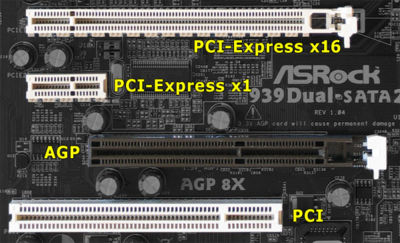
Parallel Buses
The PCI (Peripheral Component Interconnect) architecture was introduced by Intel in 1992, but did not gain significant traction over the established VESA Local Bus (VLB) in the consumer market until 1994. It was originally released only as a component specification, but later revisions added requirements for shape of connectors and motherboard slots. The bus supported both 32-bit and 64-bit bus widths. The original specification provided a 33 MHz bus speed for a peak transfer rate of 133 MB/second for a 32-bit bus, and 266 MB/second for a 64-bit bus. Later revisions of the standard increased the frequency to 66 MHz, with a peak transfer rate of 533 MB/second for a 64-bit bus.
As time progressed, heavily-graphical applications (such as video games) began pushing the limits of the shared PCI bus. In response to this, the Accelerated Graphics Port (AGP) standard appeared in 1997, which provided a direct connection between the processor and a single graphics device. AGP, though commonly referred to as a bus, was in fact a simple point-to-point channel. The single-purpose nature of this pathway allowed higher performance than could be attained when a graphics adapter shared the PCI bus. AGP was released in 1x, 2x, 4x, and 8x variants, which allowed data rates ranging from 266 MB/second up to 2133 MB/second. Higher data rates in later revisions were achieved with a constant clock speed of 66 MHz using double-data rate (DDR) and quad-data rate (QDR) techniques, among others.
In 1998, Compaq, IBM, and HP submitted a specification for PCI Extended (PCI-X) to the PCI Special Interest Group of the ACM, where it was ratified as an open standard. PCI-X doubled the bus speed over "traditional" PCI to 133 MHz, allowing for throughput up to 1.06 GB/second. This was needed because some devices, such as Gigabit ethernet cards, were saturating the PCI bus. Later revisions to PCI-X were ratified in 2003, and added even higher clock speeds (up to 533 MHz) and correspondingly higher throughputs. PCI-X never gained much market share, however, as hardware manufacturers largely chose to adopt PCI Express (PCI-E) instead.
Serial Buses
In 2001, the open HyperTransport specification was released by the HyperTransport Consortium. It provided bidirectional packet-based communications between components. It could be considered a "hybrid" technology, as it supported data widths from 2 bits (one in each direction) to 32 bits (16 in each direction). Communication frequencies were auto-negotiated between the devices up to 2.6 GHz, providing a maximum bandwidth of 20.8 GB/second in each direction. An extension called HyperTransport eXpansion (HTX) was developed which allowed plug-in cards direct access to a CPU and system memory; this gave them the ability to act as "first class citizens" on the motherboard. Using this mechanism, companies developed their own devices (mostly FPGAs) which could be plugged directly into the CPU socket. HyperTransport technology was deployed in a broad range of devices, from the Microsoft XBox gaming console to Cisco routers.
To replace the existing PCI, PCI-X, and AGP buses, Intel released the serial PCI Express (PCIe) in 2004. PCIe was designed to be software-compatible with existing PCI devices. Although the serial link transmitted only one bit at a time, the specification allowed up to 32 of these serial links (called "lanes") to be used concurrently. The lanes were not clock-synchronized; rather, the data were encoded using the 8b/10b scheme, which allowed the receiver to automatically discover the clock from the data. They operated at 2.5 GHz, allowing for a maximum effective throughput at 32 lanes of 8 GB/second in each direction. Physically, PCIe devices were connected using a crossbar switch, which allowed dynamic reallocation of communication lanes between any pair of devices. This was an improvement over the bus architectures, in which only one device could communicate at a time. Multiple lanes could be allocated between a pair of devices to achieve higher bandwidth communications. When multiple lanes were allocated to a given pair of devices, the data were interleaved across the lanes. This was referred to in the specification as "data striping". Version 2.0 of PCIe was released in January of 2007, which retained backward compatibility but allowed for a doubling of the data rate in each of the lanes to 500 MB/second.
Conclusion
As mentioned earlier, the main architectural trends have largely remained the same over the past decade: increasing logic density, higher instruction-level parallelism, and multiprocessing. The only thing that changed was the scale at which ILP and TLP was distributed. Ready access to high-density logic, high-speed buses, and CPU interconnects has provided an opportunity to mass-market systems with real parallel architecture for the first time. About 10 years ago, NUMA (Non-Uniform Memory Access) systems were only talked about in context of supercomputers. Today, anyone can afford a Dual-Socket AMD system that is a real NUMA machine.
References / Extra info
- http://www.intel.com/pressroom/archive/releases/20070128comp.htm
- http://www.intel.com/pressroom/archive/releases/20060125comp.htm
- http://domino.research.ibm.com/comm/pr.nsf/pages/news.20010425_Carbon_Nanotubes.html
Intel P6 Arch http://studies.ac.upc.edu/ETSETB/SEGPAR/microprocessors/pentium2%20(mpr).pdf
Intel Netburst http://en.wikipedia.org/wiki/NetBurst
Intel P4 microarch http://www.intel.com/technology/itj/q12001/pdf/art_2.pdf
Peripheral Component Interconnect (PCI) http://en.wikipedia.org/wiki/Peripheral_Component_Interconnect
Peripheral Component Interconnect Extended (PCI-X) http://en.wikipedia.org/wiki/PCI-X
Accelerated Graphics Port (AGP) http://en.wikipedia.org/wiki/Accelerated_Graphics_Port
HyperTransport http://en.wikipedia.org/wiki/HyperTransport
1 GHz HyperTransport Technology http://www.amd.com/us-en/Processors/ComputingSolutions/0,,30_288_13265_13295%5E13340,00.html
AMD K7 http://www.amd.com/us-en/assets/content_type/white_papers_and_tech_docs/22054.pdf
AMD K8 http://www.cpuid.com/reviews/K8/index.php
Aual and Single Core Opteron http://www-03.ibm.com/servers/eserver/opteron/pdf/IBM_dualcore_whitepaper.pdf
Intel Itanium http://en.wikipedia.org/wiki/Image:Itanium_arch.png
Sun Niagara http://www.opensparc.net/pubs/preszo/06/multicore/Niagara_Microarchitecture_ooox-Poonacha.pdf
IBM Cell http://domino.research.ibm.com/comm/research.nsf/pages/r.arch.innovation.html
NVidia GeForce 6 series http://download.nvidia.com/developer/GPU_Gems_2/GPU_Gems2_ch30.pdf
Radeon X 1800 http://www.hothardware.com/articles/ATI_X1000_Graphics_Family/?page=4